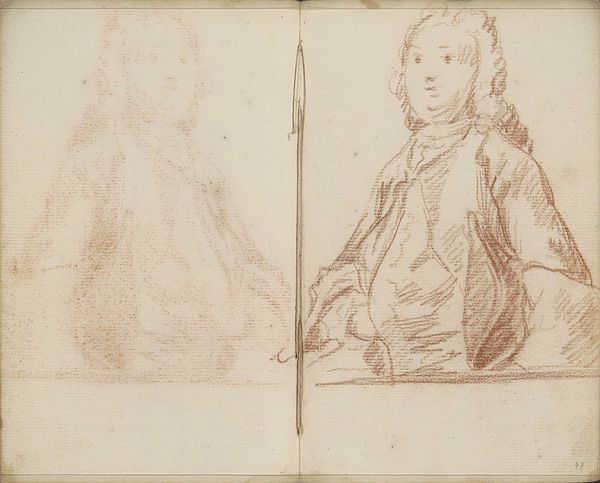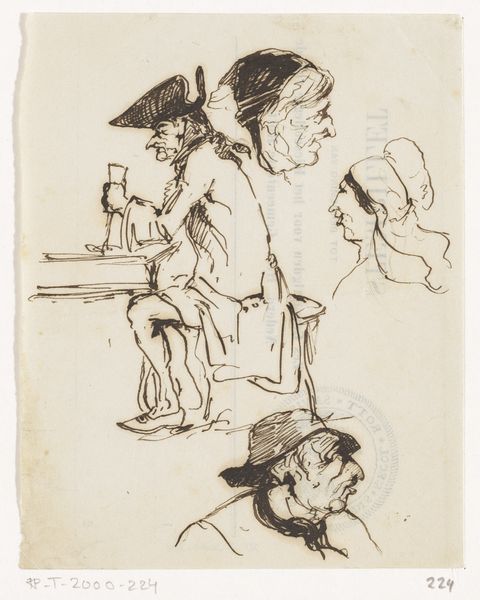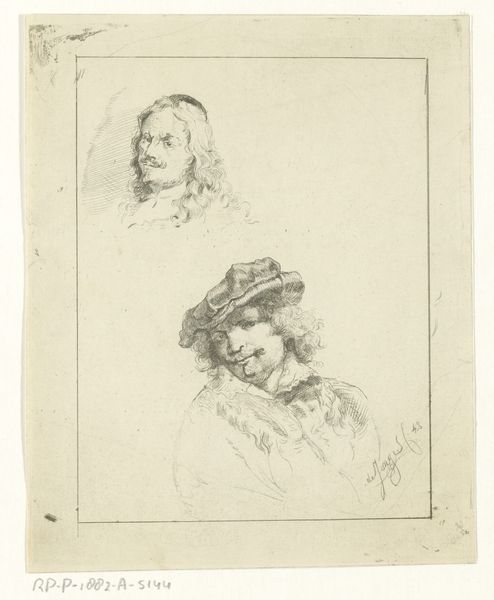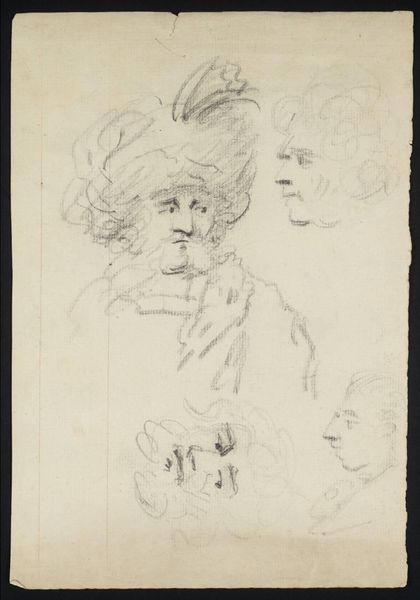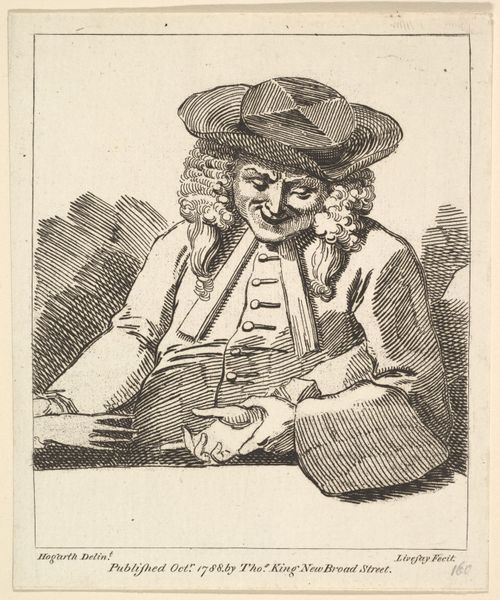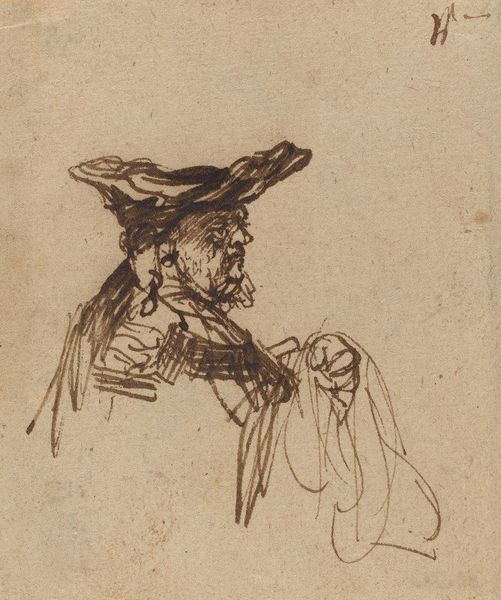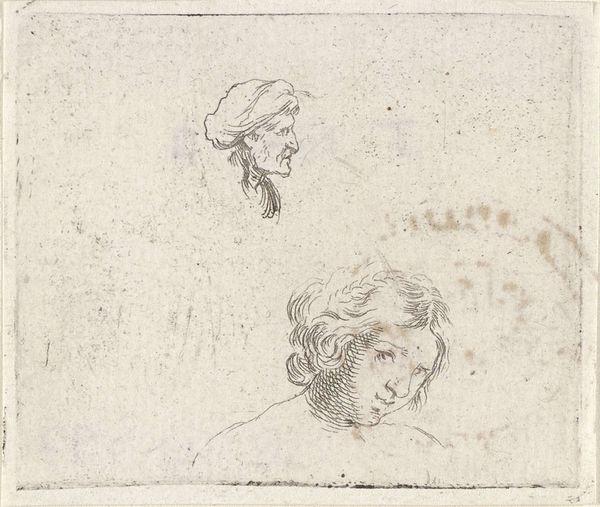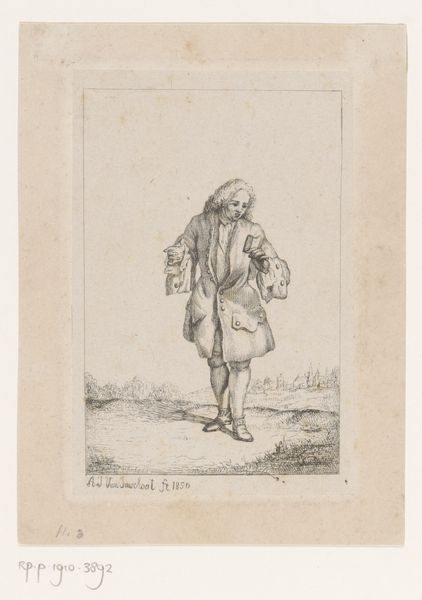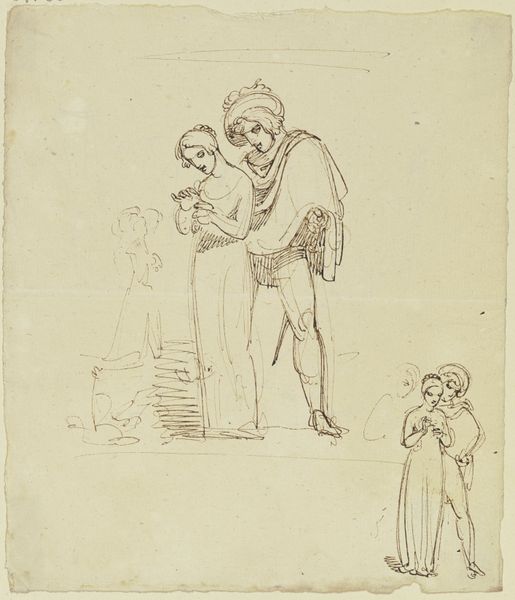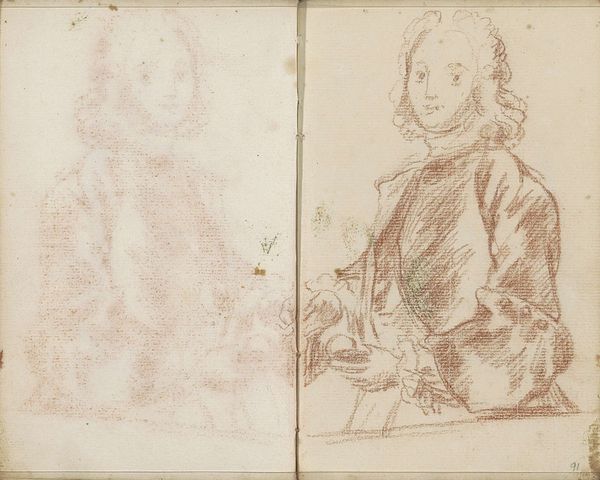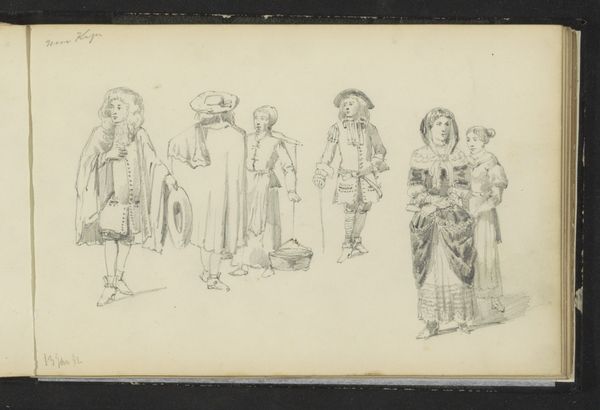
Brustbilder zweier Bauern mit flachen Hüten in Solothurn c. 1771 - 1772
0:00
0:00
drawing, ink
#
portrait
#
drawing
#
figuration
#
ink
#
15_18th-century
#
genre-painting
Copyright: Public Domain
Curator: So, here we have "Brustbilder zweier Bauern mit flachen Hüten in Solothurn," or "Busts of Two Farmers with Flat Hats in Solothurn," an ink drawing by Georg Melchior Kraus from around 1771-1772. What's your take on it? Editor: My first impression? Intriguing in its simplicity. The sparseness adds to its charm. Almost like capturing a fleeting memory on paper. Curator: Kraus really captured a moment here, didn't he? The swift, confident strokes of ink depict the two farmers with such an unaffected honesty. Notice how he uses line weight to give volume to their faces and clothing? Editor: Yes, and look at the contrasting expressions. One appears thoughtful, perhaps contemplative. The other, almost jovial. The positioning is clever too; it draws the eye and compels a sense of narration—or a conversation we are interrupting! Curator: Precisely. These aren't formal portraits, though portraiture seems to inform this, rather casual observations of local people. It shows Kraus' interest in genre scenes, ordinary life made extraordinary through art. He's making this artwork an ode to them in a beautiful moment of everyday life. Editor: There’s also a lack of idealized representation. We get to view their work-worn features, clothes and posture, conveying a very honest social depiction. I would guess Kraus probably enjoyed an environment populated by folks that resonated with his sensibilities. Curator: He did! Kraus was active in the literary and artistic circles of his time. Think of him capturing the essence of the Enlightenment, that curious desire to observe, classify and then learn through experience! And to reflect human nature. This piece echoes all of this. Editor: It truly does. These little drawings serve as intimate snapshots into 18th-century rural life in Solothurn and a portrait into its social fabric. It’s wonderful how a simple drawing can be so revealing and timeless. Curator: Yes, indeed, making one stop to really consider a bygone time as only art can truly provide. Editor: You're right! Thanks to its immediacy and to those human moments captured here, we may enjoy the view from a past, distant window, feeling empathy towards these long-gone souls.
Comments
No comments
Be the first to comment and join the conversation on the ultimate creative platform.

